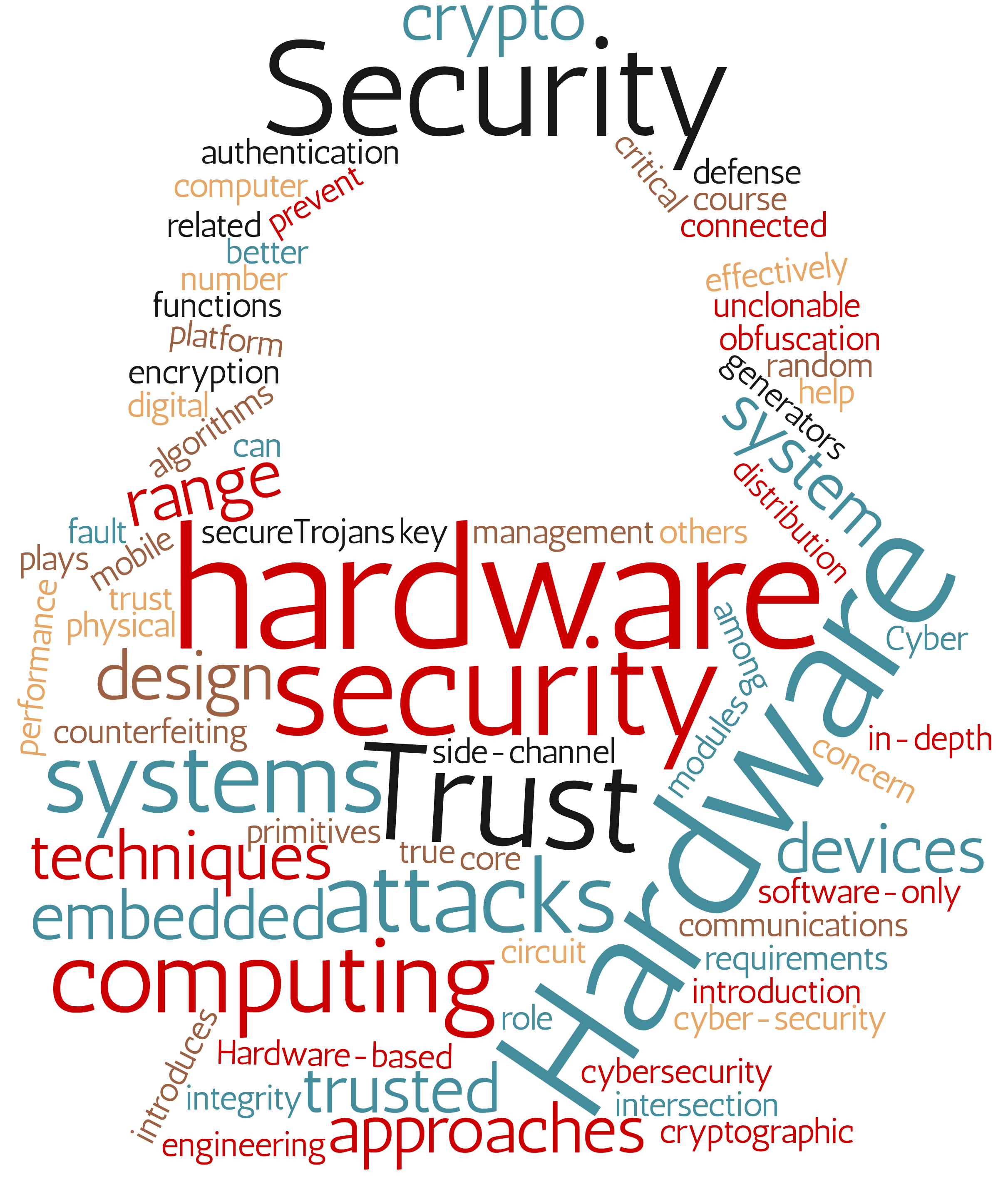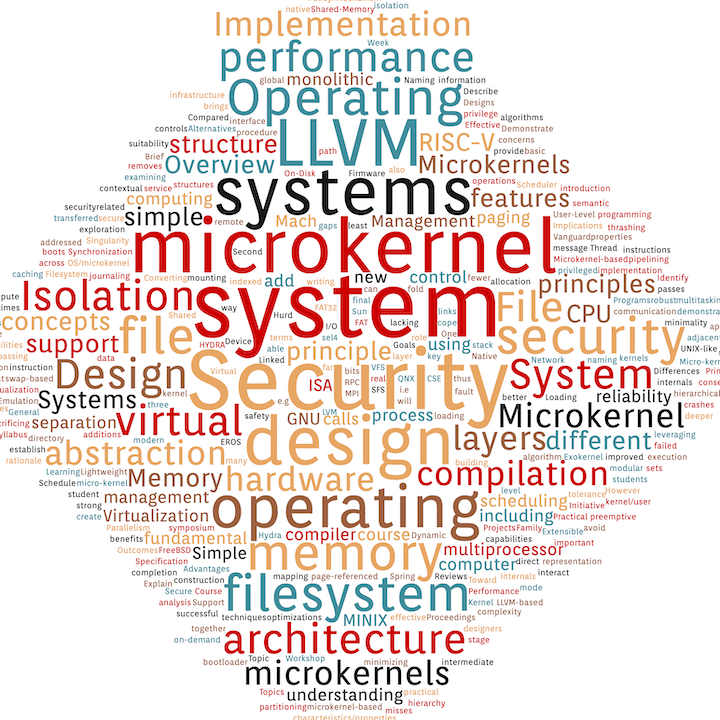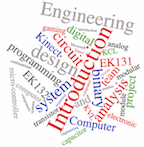The ASCS Laboratory is now part of the Secure, Trusted, and Assured Microelectronics (STAM) Center in the Ira A. Fulton Schools of Engineering at Arizona State University
Spring 2026 Course
Spring 2026, CSE/CEN 598: Topics covered are computing systems security requirements: integrity and authentication, among others; core security techniques: encryption algorithms, key distribution and management; hardware attacks: hardware Trojans, side-channel attacks, fault attacks, hardware counterfeiting; trusted hardware primitives: trusted digital system design, circuit obfuscation, trust platform modules, physical unclonable functions, true random number generators; and secure embedded and mobile devices.
Spring 2026, CSE 520: This course prepares students to analyze and optimize advanced parallel architectures using formal performance models. Students will deepen their understanding of instruction-, data-, and thread-level parallelism and their implementation in modern multi-core, GPU, and heterogeneous systems. The course emphasizes design and evaluation of multi-threaded architectures, advanced memory hierarchies, interconnect networks, and emerging technologies. They will also learn strategies for workload mapping and optimization to achieve high performance in parallel and accelerated computing environments.
Spring 2025 Course
Spring 2025, CSE/CEN 598: Topics covered are computing systems security requirements: integrity and authentication, among others; core security techniques: encryption algorithms, key distribution and management; hardware attacks: hardware Trojans, side-channel attacks, fault attacks, hardware counterfeiting; trusted hardware primitives: trusted digital system design, circuit obfuscation, trust platform modules, physical unclonable functions, true random number generators; and secure embedded and mobile devices.
Spring 2025, CSE 598: Abstraction-based design serves as a valuable tool for system designers to manage the growing complexity of computer systems. Nonetheless, despite its benefits, abstraction has not consistently provided robust security assurances throughout the various layers of these systems. This course offers a comprehensive exploration of secure microkernel design principles, effectively bridging the compilation, operating system, and CPU architecture layers within the computing abstraction stack in a practical manner.
Fall 2023 Course
Fall 2023, CSE/CEN 598: This course covers different aspects of computer system security requirements from a hardware perspective. It looks at core security techniques like encryption algorithms, key distribution, hardware Trojans, side-channel attacks, fault attacks, hardware counterfeiting, circuit obfuscation, trust platform modules, physical unclonable functions, and true random number generators.
Fall 2023, CSE 598: Abstraction-based design helps system designers handle computer systems' increasing complexity. However, it does not always ensure strong security across all system layers. This course covers secure microkernel design principles, connecting compilation, operating system, and CPU architecture layers in a practical way.
Spring 2022 Course
Spring 2022, CSE420: This course examines the tradeoffs and design considerations in the design of superscalar or instruction level parallel (ILP) microprocessors. The course will also explore other current microarchitectural approaches to improve performance and efficiency.
All laboratory related courses
Fall 2018, EC 700: In-depth inspection of the role that hardware security plays in cybersecurity and computer hardware related attacks and defense in computing systems. The topics covered are: classic and Modern encryption algorithms, integrity and authentication, key distribution and management, hardware Trojans, side-channel attacks, fault attacks, hardware counterfeiting, oblivious RAM, digital signatures, circuit obfuscation, trust platform modules, physical unclonable functions, true random number generators, and secure architecture designs.
Spring 2020, EC 500: Hardware security sits at the intersection of cryptographic engineering and hardware design. It includes hardware-root-of-trust design techniques, access control, secure multi-party computation, code authenticity techniques, secure key storage, secure execution, side-channel analysis, obfuscation methods, and IC supply chain risks. The Course introduces students to these hardware security concepts through the design of a secure multi-core processor. Using an out-of-order RISC-V processor template, students examine micro-architecture side-channel vulnerabilities, defenses, and trusted execution extensions and micro-architecture modifications.
Spring 2021, ECEN 676: This course examines the tradeoffs and design considerations in the design of superscalar or instruction level parallel (ILP) microprocessors. The course will also explore other current microarchitectural approaches to improve performance and efficiency.
Spring 2018, EC 513: Examination of the evolution and the principles underlying modern computer architectures. It emphasizes the fundamental relationship between technology, hardware organization, and programming systems. Topics covered include processor micro-architecture, instruction set design, pipelined, out-of-order, and speculative execution, superscalar, very long instruction word (VLIW), vector, and multithreaded processors, cache and virtual memory organizations, synchronization, memory models, and cache coherence protocols for multiprocessors, multithreaded architectures, multiprocessor interconnection networks, and embedded systems.
Spring 2019, Fall 2017, EC 413: Introduction to the fundamentals and design of computer systems. Topics covered include computer instruction sets, assembly language programming, arithmetic circuits, CPU design (data path and control, pipelining), performance evaluation, memory devices, memory systems including caching and virtual memory, and I/O. A single-cycle RISC processor design project using design automation tools.
Fall 2016, EK 131/132: The class introduces students to engineering analysis and design. Topics covered in the class include: introduction to analog and digital systems, binary number system, electronic components, RC circuit, circuit analysis, combinational and sequential circuits, micro-control design, and system programming.
The concurrent labs make the students apply the concepts learnt in the lectures, and culminate in a course team-based project involving Microsoft Kinect. The term's project title is: From heart monitoring to Kinect gaming - Seeing the invisible.








